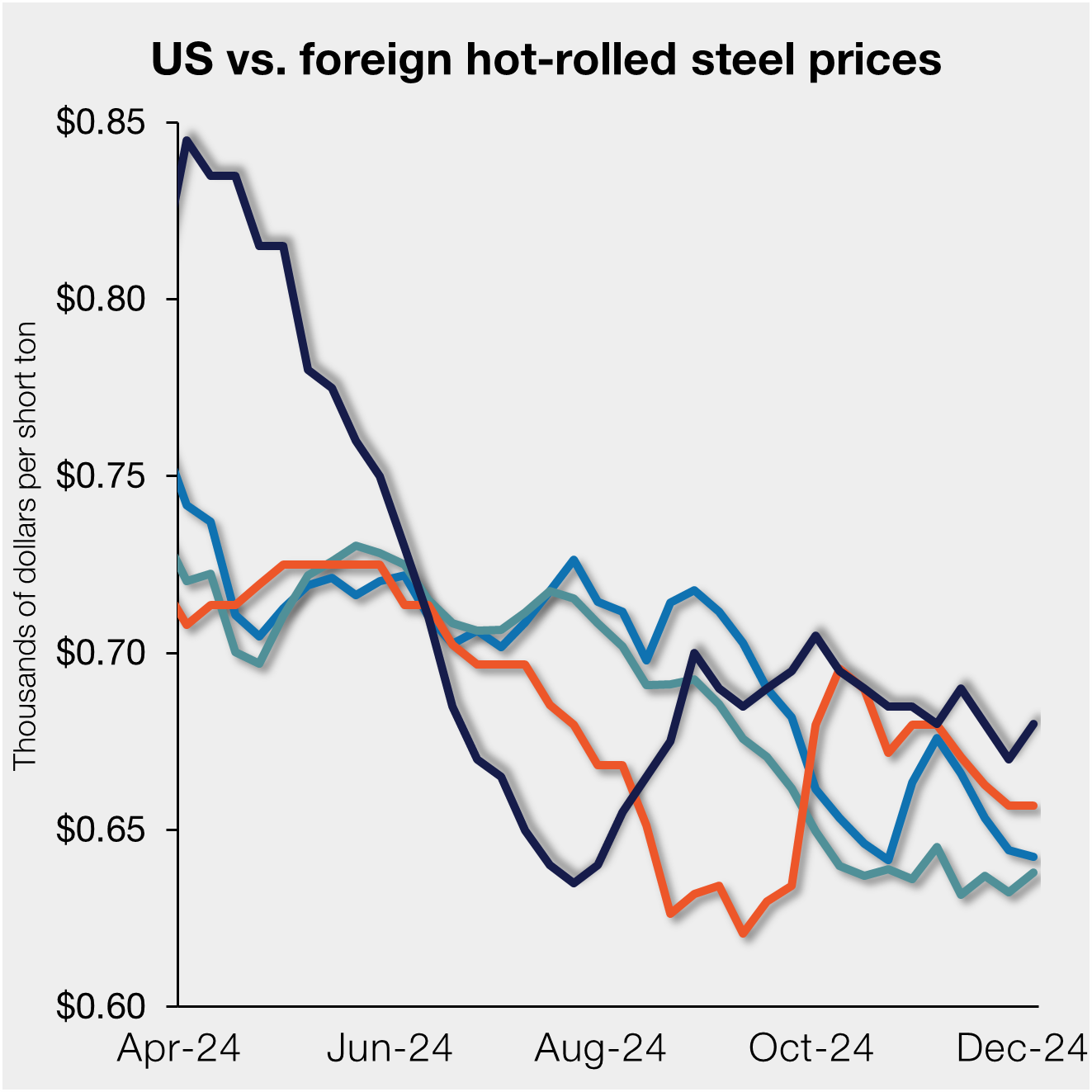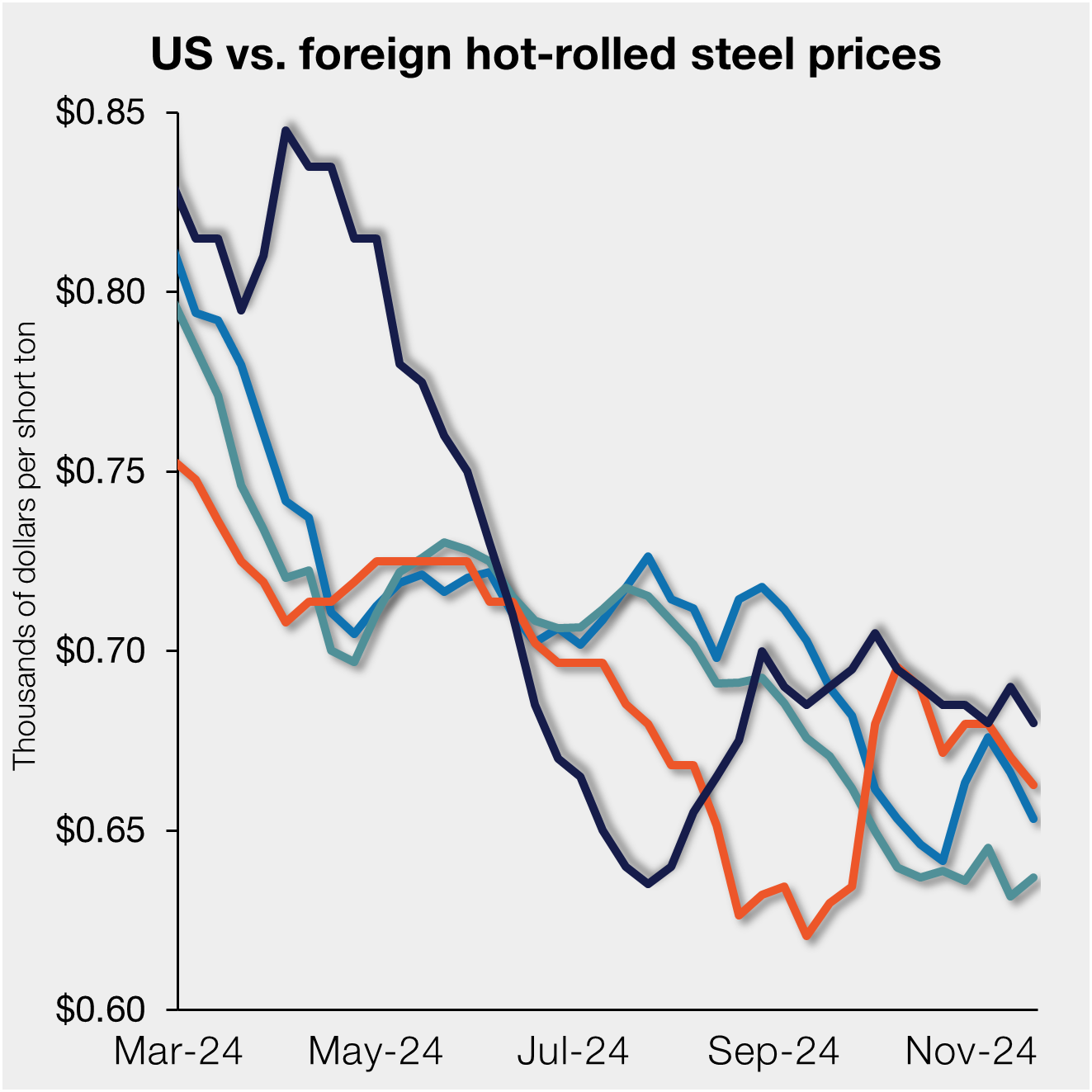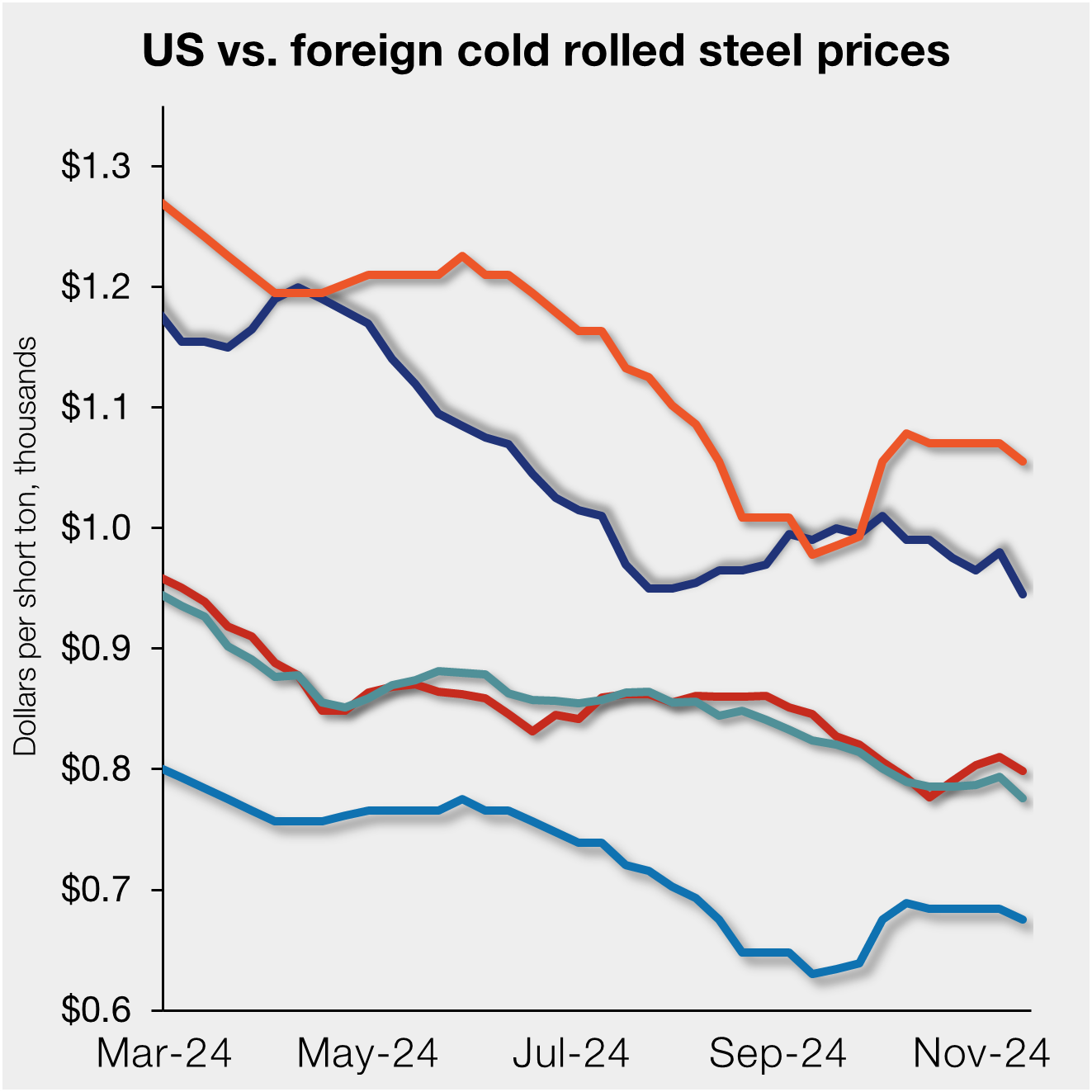International Steel Prices

Why Have Steel Prices Surged in China Over Past Few Days?
Written by John Packard
March 8, 2016
Steel prices have surged in the Chinese domestic market over the past few days. Steel Market Update reported in our Final Thoughts on Sunday evening that something was up and buyers needed to be aware of what is going on around them – both here in North America as well as around the world. Volatility is a long way from dead.
SMU approached a Chinese steel publication called SteelHome (en.SteelHome.cn) and asked them to explain why steel prices were rising and they provided us access to one of their articles on the subject. We have reproduced a large portion of the article from SteelHome.cn below:
Steel market price in China started to bottom up from December 15, 2015, and skyrocketed recently. SteelHome believed that the price rally was retaliatory rebound after unreasonable drops since second half year of 2015. Meanwhile, SteelHome doesn’t anticipate the market is to be adjusted in the future.
I Unreasonable drop resulted into retaliatory rebound
1) Falling steel prices forced steelmakers to cut production
China’s steel market price kept falling down in 2015 and headed up from middle December. By the end of 2015, SteelHome (China) Steel Market Price (SHCNSI) was 50.69 points (2,193 yuan), falling 22.28 points (964 yuan) from the beginning of 2015. The steel market hit record low after July 2015, which caused the huge losses to steel enterprises. According to China Iron and Steel Association, its member steelmakers registered monthly losses of 10 billion yuan during August-December 2015. Thereafter, some producers have to cut or halt production as capital supply was tightened. In December, the daily crude steel output in China was 2.0765 million tons, 9.65 percent lower than daily production in June. The low production sustained before Lunar New Year holiday.
2) Historically low inventories after Lunar New Year holiday
The low production move resulted into historically low inventories in marketplaces. According to SteelHome website, the combined inventories of five products (wire rod, rebar, medium plate, HR coil/plate and CR coil/sheet) amounted to 11.842 million tons on March 4, 2016, down 13.8 percent, 39.1 percent, 40.9 percent and 37.9 percent compared to the same period in 2015, 2014, 2013 and 2012.
3) Consumption-season VS low supply and low inventory
Many projects, approved last year, started up after the holiday, which heated up steel demand. The tight supply and low inventories, loose monetary policy and production cutbacks policy in Tangshan (prepared for Tangshan International Horticultural Exposition to commence from April 29), worked together to arouse the sharp price rebound in billet and steel products.
II How steel market to move forward
1) Moderate ramp-up in steelmakers
According to SteelHome survey, operating rate of blast furnaces was 80.32 percent by March 4, up 0.36 percentage points on weekly basis. Following are reasons why operating rate didn’t jump up considerably:
a) Steelmakers, which stopped production last year, were still lacking in capital supply to re-ignite the blast furnaces.
b) Low iron ore inventories and international shipments could not support overwhelming ramp-up. According to SteelHome website, iron ore inventories at 46 Chinese ports totaled 95.20 million tons on March 4, down 5.2 percent compared to the same period of 2015 and down 9.3 percent from the same period of 2014. Meanwhile, shipments from big three ports (Tubarao port, Hedland port and Dampier port) fell to 1.4 million tons on daily basis, down 10 percent compared to daily volume in December 2015.
c) Sharp rebound rise in steel also pulled up raw materials markets. In fact, the steelmakers couldn’t make big profits if calculating at current prices in steel and the ingredients.
2) Top four iron ore miners: to fight against each other at low offer to Chinese buyers
Top three iron ore miners registered losses in 2015, and only FMG, the forth miner, retained the profits. According to their annual reports, FMG earned 319 million dollars net profit in 2015 and 331 million dollars net profit in 2014; Rio Tinto lost 866 million dollars in 2015, compared to 6.527 billion dollars profit in 2014; Vale reported 12.13 billion dollars losses in 2015, compared to 657 million dollars profit in 2014; BHP Billiton had 5.669 billion dollars of net losses in H2 2015, while won 4.265 billion dollars of profit in H1.
In 2016, top four miners may continue to fight against each other in China market with their low price polices in order to keep their market share. It is reported that four mines will add 37 million tons of iron ore production in 2016, a relatively low expansion move.
SteelHome predicts that China’s iron ore import price in 2016 will average at 50-55 dollars/t (CIF); the level can not only curb domestic production increase, but also maintain the market share of four giants.
3) Low inventory determined instability in recent market
“High price while high inventory, low price while low inventory,” reiterated by Mr.Wu Wenzhang, Boar Chairman of SteelHome. He means that prices go up while inventory is increasing; price is falling while inventory is decreasing; and price is unstable at low-inventory situation. He also said that “market price bottom is determined by average cost in steel industry, and market price top is determined by average cost in steel-consuming industries.”
In spite of sharp rally, the current steel price is too low to rein in demand from end users. Meanwhile, steel futures added the finacialization property of steel products. International financial market and commodities markets also have an impact on steel price. All the factors mentioned here added the volatility in market price.
To sum up, the fundamental reason of sharp spike in market price is the conflict in demand release after Lunar New Year holiday and supply tension. Steel production is hard to recover in short run, and price will be rationalized after the “crazy” explosion. Steelmakers and traders are not suggested to increase the prices and create a tense “price-rise” market atmosphere.

John Packard
Read more from John PackardLatest in International Steel Prices

US HR price premium over imports widens
Hot-rolled (HR) coil prices were flat in the US this week, while tags in offshore markets were mostly down.

US HR price premium over imports edges up
The price premium between stateside hot band and landed imports widened slightly this week.

Domestic HR tags maintain slight premium over landed imports
Hot-rolled (HR) coil prices ticked back up in the US this week, while tags in offshore markets moved in varying directions. Thus, the price premium between stateside hot band and imports on a landed basis widened slightly. After leveling with import prices in late August, stateside tags have been mostly stable and ahead of imports […]

Domestic HR, offshore prices decline
US hot-rolled (HR) coil prices slipped this week, while tags in offshore markets were also largely down. Thus, the price premium between stateside hot band and imports on a landed basis was relatively unchanged.

US CR, import prices edge back down
The price spread between US-produced cold-rolled (CR) coil and offshore products slipped in the week ended Nov. 15, on a landed basis.
